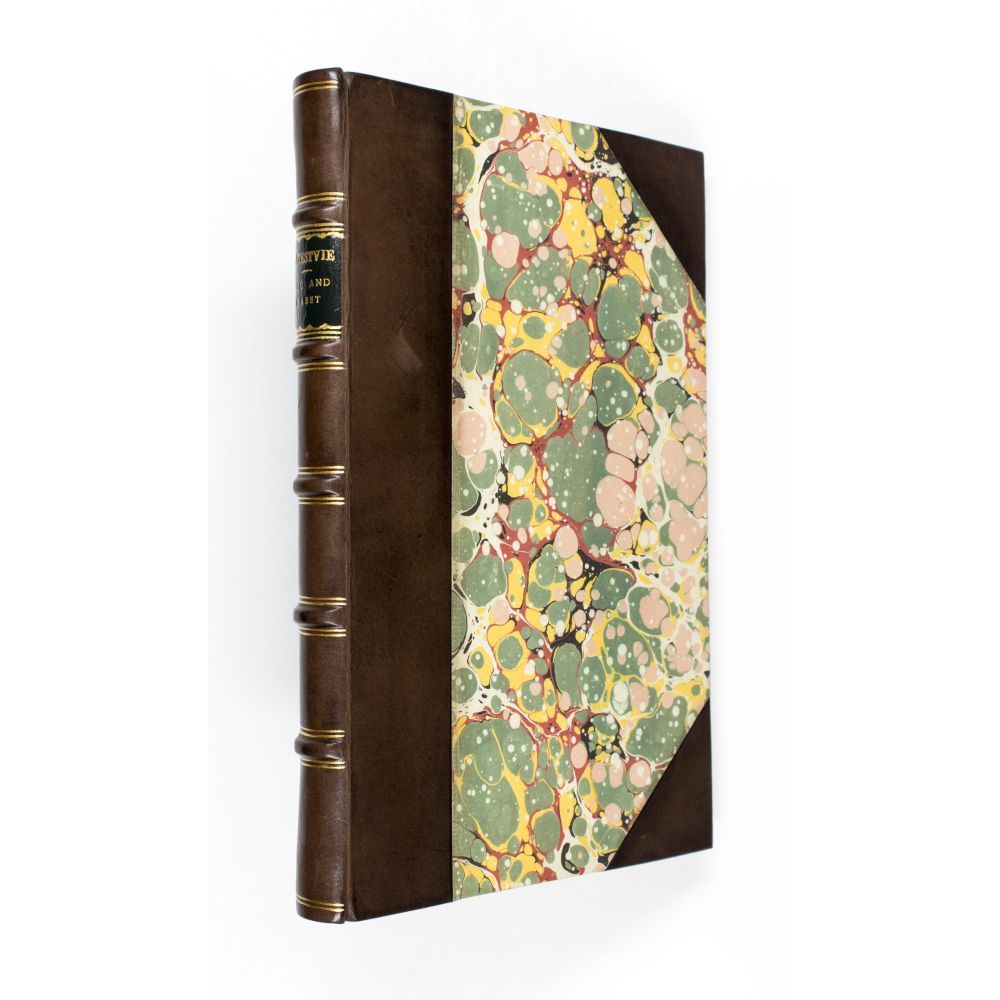Russian translation of Huc & Gabet's account of Lhasa�
Puteshestvie cherez Mongoliiu v Tibet, k stolitse Tale-lamy
[A Journey across Mongolia to Tibet, and the Capital of the Dalai-Lama. Translated from the French] Moscow K.S. Henry 1866
First edition in Russian, 8vo, pp.[ii], vi, 322, [ii]. A very good copy in later half calf, marbled boards, spine gilt. Slightly foxed throughout, a few ink stains. Red Chinese chop on title. Russian newspaper clipping (1880's) about Mongolia and Baikal bound in at end.
The Russian translation of Huc and Gabet's account of their travels undertaken in 1844-46, first published in Paris in 1850 as Souvenirs d'un voyage dans la Tartarie, le Thibet et la Chine, which proved so popular that it was rapidly reprinted and translated into several European languages. Évariste Régis Huc (1813-1868), a French Lazarist missionary, was first sent to China in 1839, and went on to travel extensively in China, Tartary and Tibet. In 1844, with his fellow missionary Joseph Gabet (1808-c.1850), he was ordered to approach and study nomadic Mongol tribes. Assuming the dress of lamas they embarked on an 18-month voyage to Lhasa, and were the first Europeans to enter the city after Thomas Manning. En route they saw the Yellow River, Ordos Desert, Gansu province, Koko Nor (Qinghai), and stayed for three months at Kunbum Lamasery, where they studied the Tibetan language and Buddhist literature. Reaching Lhasa on January 29, 1846 they were favourably received by the regent and permitted to open a chapel. But their missionary plans were thwarted when Qishan, the Chinese resident, interceded. Sensing potential trouble with Britain if Huc and Gabet were to reach India from Tibet, Qishan expelled them from Lhasa under guard on February 26, 1846. Following an official inquiry into their motives for being in Tibet, they were escorted to Canton in October, 1846. Huc's works are written in an entertaining and informative style, securing for them an unusual degree of popularity. His esteem for Tibetan manners and religion, however, was not welcomed by his Church. He was particularly shunned for his comparisons of certain Buddhist and Catholic rituals.




